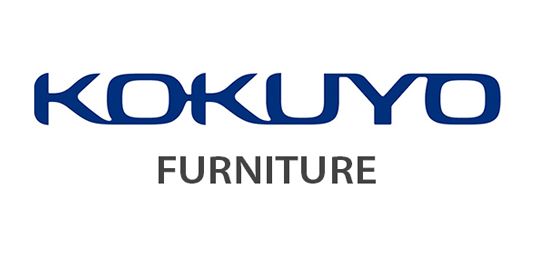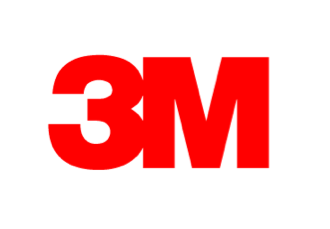In-Building Wireless Market By Solutions (System Components, Services); By Component (DAS, Small Cell, Antennas, Cabling, Repeaters); By Business Model (Service Providers, Enterprises, Neutral Host Operators); By Venue (Large Venues, Medium Venues, Small Venues); By End user (Government, Manufacturing, Transportation and Logistics, Institutions, Commericals, Retail, Hospitality); By Region (North America, Europe, Asia Pacific, Latin America, Middle East & Africa) - Global Market Analysis, Trends, Opportunity and Forecast, 2022-2032
In-Building Wireless Market Overview and Definition
In-building wireless market revenue will reach approximately USD 22.5 billion in 2022. Further, our In-building wireless market insights show that the market is expected to grow at a CAGR of approximately 5.2% during the forecast period and reach a value of approximately USD 37.3 billion by 2032.
The in-building wireless market refers to the segment of the telecommunications industry that focuses on providing wireless connectivity within buildings, such as offices, hospitals, airports, hotels, and shopping malls. In-building wireless systems use a network of antennas and other equipment to distribute wireless signals throughout the building, providing seamless connectivity to users.
In-building wireless systems are designed to address the challenges of providing reliable wireless connectivity within large buildings, which can be difficult due to factors such as building materials, interference, and the distance between the user and the nearest cell tower.
In-building wireless systems typically include a distributed antenna system (DAS) or small cells, which are connected to a centralized signal source, such as a base station or a repeater. These systems can support a range of wireless technologies, including cellular, Wi-Fi, and public safety communications.
In-building wireless systems can provide a range of benefits to building owners, tenants, and users. These benefits include improved coverage and reliability, faster data speeds, and better support for emerging technologies like the Internet of Things (IoT) and 5G.
The in-building wireless market is expected to continue to grow in the coming years, as demand for wireless connectivity increases and more buildings adopt these systems to improve their wireless infrastructure.
In-building wireless communication technology is a combination of services, networks, and products that are utilized to maintain connectivity inside buildings especially in the core structures where the signals are not reachable. Most in-building wireless systems are professionally designed, engineered, modified, and installed to the precise specifications of a building—using a network of antennas, cables, and amplifiers to bring enhanced cellular connectivity unreachable areas with bad coverage.
The in-building wireless communication technology permits the distribution of cellular, long-term-evolution (LTE) and other radio frequencies in high-rise buildings, vast campuses, crowded stadiums, hotel properties etc. to ensure consistent and smooth connectivity.
Buildings are now being pre-equipped to install in-building wireless solutions as several enterprises and individuals are now highly reliant on the internet for their day-to-day operations and are accordingly seeking solutions to increase their productivity.
The in-building wireless market is expected to grow at a tremendous CAGR in the years to follow.
MARKET DRIVERS:
The growth of this market is attributed towards major pertaining factors which include but are not limited to: the increasing demand for network coverage and capacity worldwide, the growing demand for smart-phones and increasing data usage by customers, the increasing need for unique and defined network coverage, global implementation of public safety measures, digital transformation, and smart and intelligent building trends, the rising congestion in the networks and strict government regulatory policies for building cell sites for better connectivity, communication, and excellent mobility, the 5G technology transition and expanding spectrum coverage across higher bands etc.
Additionally, increasing consumption of data through smartphones and related devices, growing expenditure by government and private organizations to improve connectivity in public places, such as airports, train stations, and stadiums are expected to bolster the overall demand and growth of this market.
Moreover, as residential building owners are increasingly focusing on continuous wireless application access, better quality of service, and compliance to local safety norms, the adoption of in-building wireless systems is taking a leap. Also, the wireless solutions are anticipated to gain power with customer's selection criterions shifting to coherent coverage, better data performance, and seamless connectivity. Reliable indoor coverage can help attract residential and business tenants to a facility at more lucrative and attractive rents.
Furthermore, the in-building solutions allow firms and organizations to focus on their core business functions, by providing influential communication infrastructure to their customers. The owners of small, medium, and large-sized buildings are strategically analyzing the in-building wireless functionalities for their buildings to ensure proper network coverage for users and create an environment that supports smooth working while providing tremendous satisfaction to them.
However, data privacy and security concerns, issues regarding interference, designing and installation, demand for skilled labor labors due to difficulty in installation and design, high initial cost of deployment are a few factors which hinder the growth of this market.
IN-BUILDING WIRELESS MARKET SEGMENTATION:
By Solutions
- System Components
- Services
By Component
- DAS
- Small Cell
- Antennas
- Cabling
- Repeaters
By Business Model
- Service Providers
- Enterprises
- Neutral Host Operators
By Venue
- Large Venues
- Medium Venues
- Small Venues
By End user
- Government
- Manufacturing
- Transportation and Logistics
- Institutions
- Commericals
- Retail
- Hospitality
- Healthcare
- Others
By Region
- North America
- Europe
- Asia Pacific
- Latin America
- Middle East & Africa
REGIONAL INSIGHT:
The North American region is currently dominating this market and is anticipated to continue to do the same in the years to come. This can be well attributed to the wide-spread penetration of the internet and high demand among enterprises to offer high-speed connectivity in the region, the increasing number of internet subscribers, expanding mobile data traffic, growing government emphasis on enhancing telecommunications infrastructure, adoption of various new and advanced technologies by the organizations and the people and the growing strategic partnerships by some of the prominent players in the region etc.
The Asia-Pacific region holds a significant share in the global In- building wireless market owing to the large population, increasing telecom users in the region, the increasing digital transformation and presence of some of the major contributing countries including India, Japan, Australia, China etc. in the region.
The regions such as the Middle East and Africa and Latin America are also proving to be lucrative markets for the in-building wireless products and services as a result of increasing awareness and investments seen in the region.
FEW KEY PLAYERS IN IN-BUILDING WIRELESS MARKET:
- Nokia
- Cobham PLC
- Alcatel-Lucent Enterprise
- Smiths Group PLC
- Corning Incorporated
- Verizon Communication, Inc.
- AT&T, Inc.
- Huawei
- ZTE
- NEC
- Axell Wireless
- Zinwave
- Fujitsu
- BTI Wireless
- Casa Systems
- JMA Wireless
- Whoop Wireless
- Westell Technologies
- Anixter Inc.
- Commscope, Inc.
- Ericsson
- TE Connectivity
- Ethertronics
- Lord and Company Technologies
- Betacom Incorporated
- Comba Telecom
- Samsung
- Oberon Inc.
- Other Players
RECENT DEVELOPMENTS:
- In November 2020, Axell Wireless appointed Simon Cosgrove as its new CEO, to enhance the company’s international growth and development into new markets. The appointment followed the acquisition of Axell Wireless by Rcapital in June 2020.
- In November 2020, Geoverse, the largest Neutral Host operator across the US which provides comprehensive in-building cellular solutions, appointed Bob Gault as Chief Commercial Officer to Lead Sales and Marketing Initiatives in the company.
Timeline Considered for Analysis:
- 2019: Base Year
- 2020 to 2025: Forecast Period
Research Scope and Deliverables
Overview & Executive Summary
Market Drivers, Trends, Challenges and Opportunities
Market Size and Forecast Projections
Macroeconomic Indicators of Various Countries Impacting the Growth of the Market
Extensive Coverage of Industry Players including Recent Product Launches and Market Activities
Porter’s Five Force Analysis
Market Segmentation Analysis:
Industry report analyzes the global in-building wireless market by the following segments:
- Solutions
- Component
- Business Model
- Venue
- End user
Customization: We also offers customization’s in the industry report as per the company’s specific needs.
Key Questions Answered in the Global In-building Wireless Industry Report
- What is the overall market size in 2019? What will be the market growth during the forecast period i.e. 2020-2025?
- Which region would have high demand for product in the upcoming years?
- What are the factors driving the growth of the market?
- Which sub-market will make the most significant contribution to the market?
- What are the market opportunities for existing and entry-level players?
- What are various long-term and short-term strategies adopted by the market players?

Need Customized Report for Your Business ?
Utilize the Power of Customized Research Aligned with Your Business Goals
Request for Customized Report- Quick Contact -
- ISO Certified Logo -

















